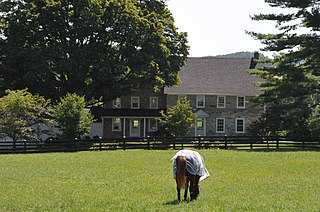
East Fallowfield Township is a township in Chester County, Pennsylvania, United States. The population was 7,626 at the 2020 census.
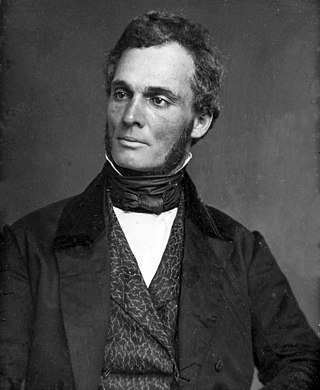
Robert Purvis was an American abolitionist in the United States. He was born in Charleston, South Carolina, and was likely educated at Amherst Academy, a secondary school in Amherst, Massachusetts. He spent most of his life in Philadelphia, Pennsylvania. In 1833 he helped found the American Anti-Slavery Society and the Library Company of Colored People. From 1845 to 1850 he served as president of the Pennsylvania Anti-Slavery Society and also traveled to Britain to gain support for the movement.

Thomas Garrett was an American abolitionist and leader in the Underground Railroad movement before the American Civil War. He helped more than 2,500 African Americans escape slavery.

John Hunn was an American farmer and abolitionist who was a "station master" of the Underground Railroad in Delaware, the southernmost stationmaster and responsible for slaves escaping up the Delmarva Peninsula.

The Religious Society of Friends, better known as the Quakers, played a major role in the abolition movement against slavery in both the United Kingdom and in the United States. Quakers were among the first white people to denounce slavery in the American colonies and Europe, and the Society of Friends became the first organization to take a collective stand against both slavery and the slave trade, later spearheading the international and ecumenical campaigns against slavery.

The Friends Meetinghouse is an historic Friends Meeting House of the Religious Society of Friends (Quakers) located at the junction of Routes 146A and 98 in Uxbridge, Massachusetts. On January 24, 1974, it was added to the National Register of Historic Places.
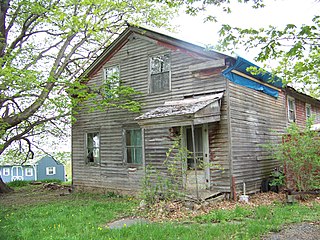
The Slocum and Hannah Howland House is located at 1781 Sherwood Road in the hamlet of Sherwood in Cayuga County, New York. It was one of the most active Underground Railroad stations in New York.

The Mount Pleasant Historic District encompasses the historic center of the village of Mount Pleasant, Ohio. Founded in 1803 by anti-slavery Quakers, the village was an early center of abolitionist activity and a well-known haven for fugitive slaves on the Underground Railroad. The village center is relatively little altered since the antebellum period. The district was listed on the National Register of Historic Districts in 1974, and was designated a National Historic Landmark in 2005.

The Lukens Pierce House, also known as the Fallowfield Octagonal House. is an historic octagon house which is located northwest of Ercildoun on Wilmington Road in East Fallowfield Township, Chester County, Pennsylvania.

White Horse Farm, also known as the Elijah F. Pennypacker House, is a historic home and farm located in Schuylkill Township, Chester County, Pennsylvania. The original section was built around 1770. In the 19th century, it was the home of abolitionist Elijah F. Pennypacker and served as a station on the Underground Railroad. The farm was added to the National Register of Historic Places in 1987.

Alan West Corson Homestead is a historic house located in Whitemarsh Township, Montgomery County, Pennsylvania. It was built in three sections between 1734 and 1820. It is a 2+1⁄2-story, stuccoed stone dwelling, six bays wide and two bays deep. It has a 2+1⁄2-story rear ell. Also on the property is a contributing smoke house. The property was used for one of the earliest area nurseries and a boarding school.

The Hovenden House, Barn and Abolition Hall is a group of historic buildings which are located in Plymouth Meeting, Whitemarsh Township, Montgomery County, Pennsylvania. In the decades prior to the American Civil War, this property served as an important station on the Underground Railroad. Abolition Hall was built to be a meeting place for abolitionists, and later was the studio of artist Thomas Hovenden.
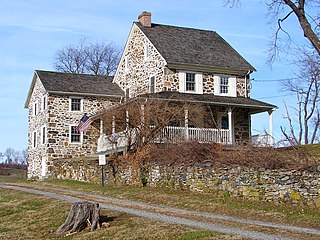
Okehocking Historic District, also known as the Okehocking Indian Land Grant Historic District, is a national historic district in Willistown Township, Chester County, Pennsylvania. It was listed on the National Register of Historic Places in 1993.

Amy Hester "Hetty" Reckless (1776–1881) was a runaway slave who became part of the American abolitionist movement. She campaigned against slavery and was part of the Underground Railroad, operating a Philadelphia safe house. She fought against prostitution and vice, working toward improving education and skills for the black community. Through efforts including operating a women's shelter, supporting Sunday Schools and attending conferences, she became a leader in the abolitionist community. After her former master's death, she returned to New Jersey and continued working to assist escaping slaves throughout the Civil War.
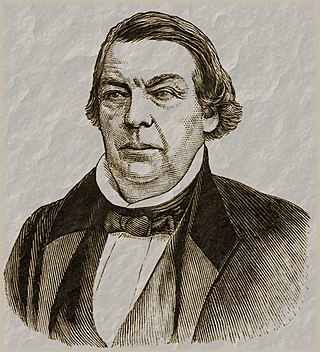
Bartholomew Fussell (1794–1871) was an American abolitionist who participated in the Underground Railroad by providing refuge for fugitive slaves at his safe house in Kennett Square, Pennsylvania, and other locations in Pennsylvania and Ohio. He aided an estimated 2000 slaves in escaping from bondage. He was a founding member of the American Anti-Slavery Society. Fussell was an advocate for women serving as physicians, and he influenced the founding of the Women's Medical College of Pennsylvania. He worked as a practicing physician, including providing medical services for fugitive slaves.
Isaac S. Flint was an Underground Railroad station master, lecturer, farmer, and a teacher. He saved Samuel D. Burris, a conductor on the Underground Railroad, from being sold into slavery after having been caught helping runaway enslaved people.

Elijah Funk Pennypacker was a politician, abolitionist and station master in the Underground Railroad in the United States, in the years leading up to the American Civil War. He operated in Chester County, Pennsylvania. Pennypacker's home, White Horse Farm, was a safe house during the time that he participated in the Underground Railroad. As a station master in the Underground Railroad, Pennypacker reportedly aided hundreds of fugitive slaves in their escape to freedom, without any having been apprehended by authorities or by bounty hunters. He also served as a member of the Pennsylvania House of Representatives, representing Chester County from 1832 to 1833 and from 1835 to 1836.

Eusebius Barnard was an American farmer and station master on the Underground Railroad in Chester County, Pennsylvania, helping hundreds of fugitive slaves escape to freedom. A minister of the Progressive Friends and founding member of Longwood Meeting House, Barnard championed women’s rights, temperance, and abolition of slavery. A Pennsylvania state historical marker was placed outside his home in Pocopson Township on April 30, 2011.

Isaac Mendenhall was an American farmer, abolitionist, and station master on the Underground Railroad in Chester County, Pennsylvania. Isaac and Dinah Mendenhall aided several hundred fugitives to escape to freedom. Prosperous farmers, they lived at the estate of Oakdale, listed on the National Register of Historic Places since 1972. A Pennsylvania state historical marker was dedicated in their honor on November 10, 2018.




























